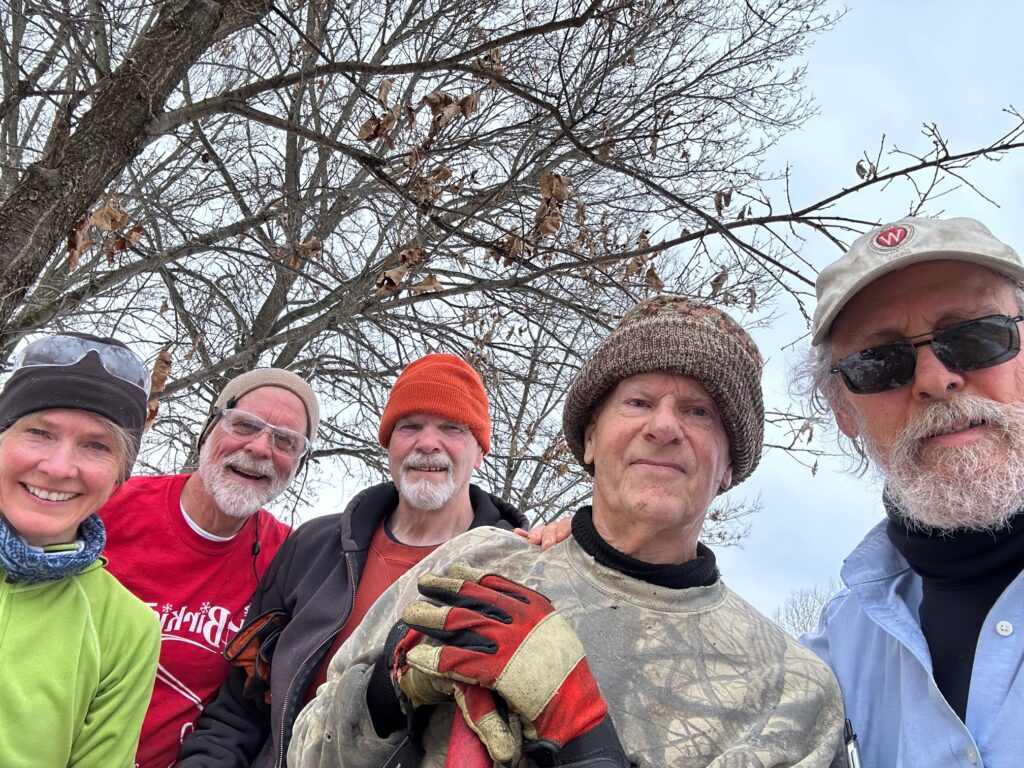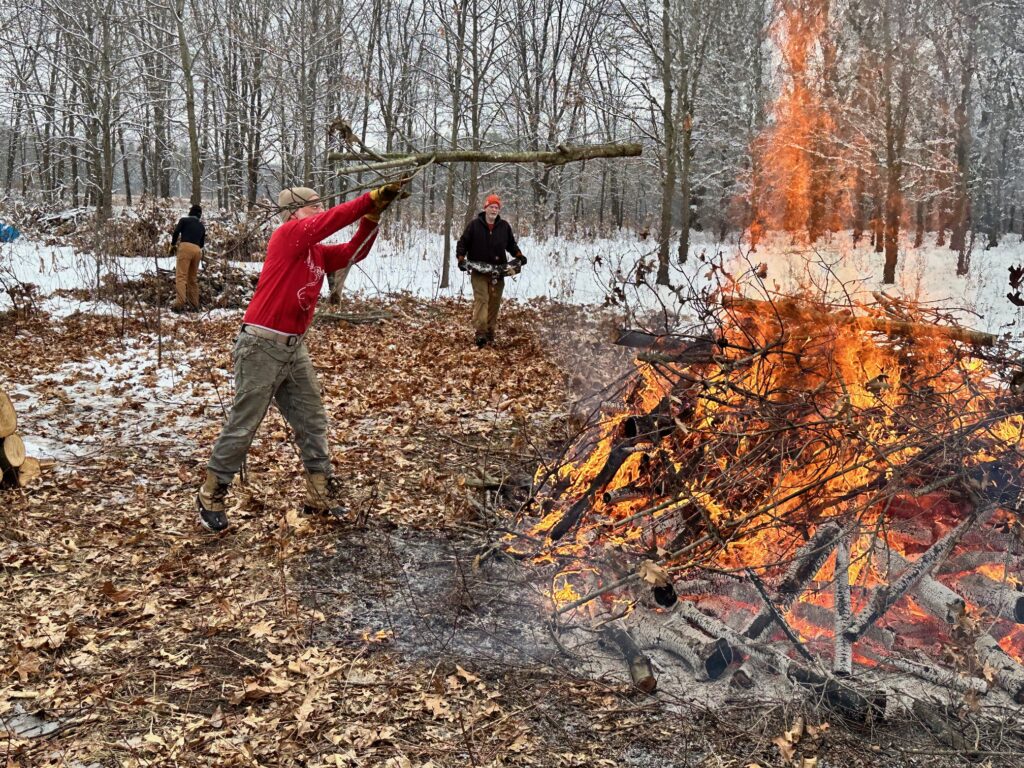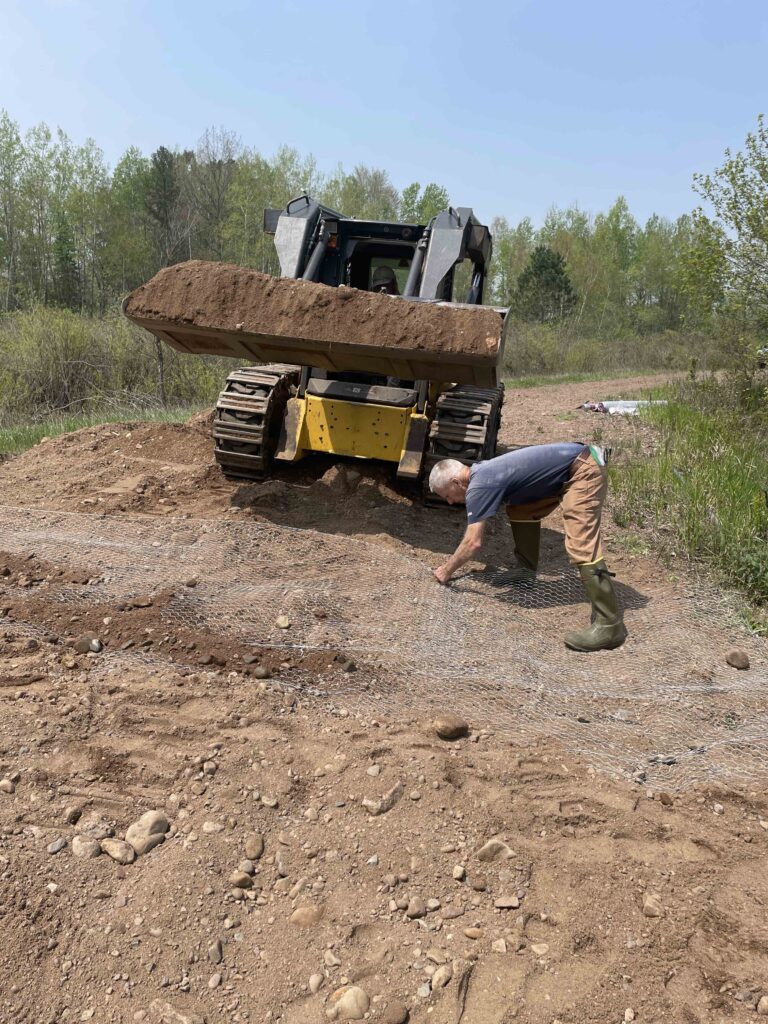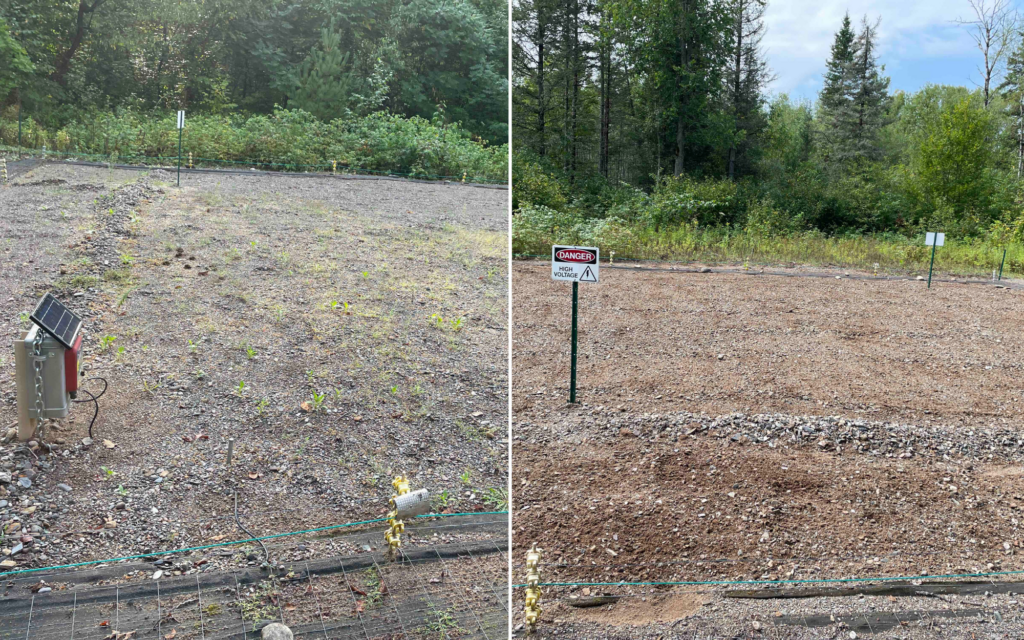2024 | 2023 | 2022 | 2021 | 2020 |
MAZOMANIE STATE NATURAL AREA
From February through March we resumed our habitat work focusing on thinning Black Oaks in an area that had not been managed for three decades. The purpose of this work was to allow more sunshine on this overgrown dry-sand prairie, especially where Oak densities had resulted in very sparse ground vegetation. We created a number of Oak brush piles from February and March and resumed cutting and piling starting in mid-October through late December. We had a significant snowfall on December 21 that allowed us to burn several of the burn piles on December 22.
In late March the WDNR conducted a prescribed burn on the 80 acres that we voluntarily manage. A very small but old Sumac clone (approximately 40’ x 80’) had never been treated with herbicide, but managed to survive the few prescribed burns that occurred between 2000 and 2019. In 2020 or 2021, this old stagnant clone started rapidly spreading underground, and by 2022 we started to see rapid growth of hundreds of young Sumacs. By 2024 this clone had spread amazingly fast. We treated the clone three times in 2024 using Garlon 4 applied initially by swabbing all stems. Our initial swab treatment with the herbicide appeared to energize the entire clone, and by late June there were many more resprouts, often producing 2-3 new sprouts for every Sumac we treated. We applied a second and third treatment using a mix of swabbing stems on a north-facing slope that has less direct sunlight, and spraying the new leaflets on the smaller trees that received significant sunshine. The trees on the flat prairie showed 100% kill above ground by mid-October. The area on a north spacing slope that has less sunlight continue to produce new sprouts. We treated those Sumacs two times in September and early October. It will be interesting to see what we find in this clone in 2025.
We began cutting and piling Black Oaks from mid-February through late March and resumed cutting from mid-October through most of December. We had only one chance to burn piles in late December on.


Wood Turtle Program
At one of our nesting sites, we have had some trouble convincing the turtles to use our protected site versus the road and a nearby hill of sand. To deter the turtles from these sites and to encourage them to use our protected site, we erected fencing around the hill of sand and we buried chicken wire along the road and then covered it with gravel to prevent turtle nesting.
The Wood Turtle program in 2024 was amazing and quite a surprise after seeing what happened in 2023. Twenty six of the Twenty Seven nesting sites that we manage had very weather-friendly nesting conditions, resulting in the highest number of hatchlings produced since our program started in 2009. One site that usually produces high hatchlings numbers produced only one clutch due to severe localized drought during the peak months of development. We currently have 29 nesting sites in Wisconsin and one in Michigan. The USFS keeps track of three sites. We may try to visit these sites in August and September in the future to get a full picture of our annual hatch numbers. The 27 sites that we manage produced a record high number of 661 hatchlings in 2024, close to twice the number that we counted in 2023.
Every season since our program started in 2009 we have managed our nesting sites by removing all vegetation four times from May through September. It is by far our most challenging aspect of our work, but our hatching results make it well worthwhile.
At one of our nesting sites, we have had some trouble convincing the turtles to use our protected site versus the road and a nearby hill of sand. To deter the turtles from these sites and to encourage them to use our protected site, we erected fencing around the hill of sand and we buried chicken wire along the road and then covered it with gravel to prevent turtle nesting.

